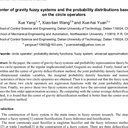Hemoglobin pretreatment endows rat cortical astrocytes resistance to hemin-induced toxicity via Nrf2/HO-1 pathway.
কীওয়ার্ডস
বিমূর্ত
Oxidative stress mediated secondary injury contributes to neurological deterioration after intracerebral hemorrhage (ICH). Astrocytes, the most dominant cells in the central nervous system (CNS), play key roles in maintaining redox homeostasis by providing oxidative stress defense. Hemoglobin (Hb), the primary component released by hemolysis, is an effective activator of astrocytes. Hemin, the product of Hb degradation, is highly toxic due to the induction of reactive oxygen species (ROS). We speculate that Hb-activated astrocytes are resistant to hemin-induced toxicity. To verify our speculation, Hb-pretreated astrocytes were exposed to hemin, intracellular ROS accumulation and cell apoptosis were evaluated. Heme oxygenase 1 (HO-1) and nuclear transcription factor-erythroid 2 related factor (Nrf2) expression were observed to explore the potential mechanism. The results demonstrated that Hb induced upregulation and nuclear translocation of Nrf2 in astrocytes, resulted in HO-1 upregulation, which contributed to reduced ROS accumulation and apoptosis rate. Knocking down Nrf2 expression by siRNA suppressed Hb-induced upregulation of HO-1 expression and increased the susceptibility of Hb-pretreated astrocytes to hemin-induced toxicity. Taken together, Hb-activated astrocytes acquired resistance to hemin-induced toxicity via Nrf2/HO-1 pathway. This phenomenon can be considered as the adaptive self-defense in the pathological process of ICH. Hb pre-warned astrocytes and enhanced their capability of handling the coming hemin "flood". Nrf2/HO-1 may be employed as a target for neuroprotection after ICH.



